When we dive beneath the ocean’s surface, we enter a world where breathing takes on an entirely different meaning. Among the most fascinating respiratory systems are those of sharks and fish, which, despite appearing similar at first glance, function in remarkably different ways. Sharks, as ancient predators who have roamed our oceans for over 400 million years, have evolved distinct gill structures and breathing mechanisms that set them apart from their bony fish counterparts. This article explores the fascinating differences between shark and fish gills, illuminating how these adaptations have contributed to the success of these marine creatures in their respective ecological niches.
The Basic Function of Gills

Gills are specialized respiratory organs that extract dissolved oxygen from water and release carbon dioxide, functioning as the aquatic equivalent of our lungs. In both sharks and bony fish, water flows over gill filaments, which contain a dense network of blood vessels where gas exchange occurs. These filaments are arranged on gill arches, providing an extensive surface area to maximize oxygen absorption from the water. Despite serving the same fundamental purpose, the structural and functional differences between shark and fish gills represent distinct evolutionary pathways that have developed over hundreds of millions of years. The efficiency of these respiratory systems has been crucial for survival in the diverse aquatic environments these animals inhabit.
Gill Structure: Sharks vs. Bony Fish

One of the most noticeable differences between shark and bony fish gills lies in their basic structure and arrangement. Sharks typically possess five to seven gill slits on each side of their head (depending on the species), with each slit being visible externally as a separate opening. In contrast, most bony fish have just one external gill opening on each side, covered by a protective bony plate called the operculum. Inside this opercular chamber lie four gill arches with their filaments. The shark’s exposed gill arrangement represents a more primitive evolutionary design compared to the more advanced and protected gill system of bony fish. This structural difference significantly influences how water flows through the respiratory systems of these animals.
Water Flow Mechanisms
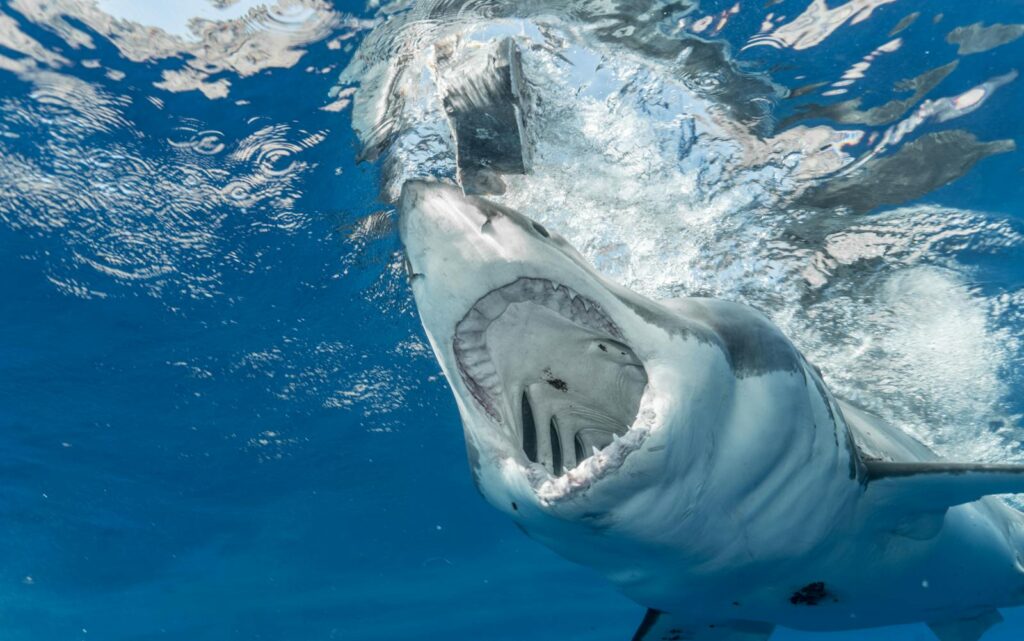
The method of moving water across the gills represents perhaps the most significant functional difference between sharks and bony fish. Most bony fish utilize a pumping mechanism called buccal pumping, where they actively take water in through their mouth and pump it over their gills by expanding and contracting their oral and opercular cavities. This creates a pressure differential that forces water across the gill filaments before exiting through the opercular opening. Sharks, however, generally cannot pump water effectively and instead rely primarily on what’s known as ram ventilation – they must keep swimming forward to force water through their mouth, over their gills, and out through their gill slits. This fundamental difference explains why many shark species must swim continuously to breathe, while most fish can remain stationary while still obtaining oxygen.
Gill Slit Positioning and Function

The positioning of gill slits in sharks serves a crucial hydrodynamic function that differs from the opercular system in bony fish. Shark gill slits are arranged sequentially along the sides of the head behind the eyes, creating a series of exit points for water. This arrangement helps maintain a smooth, streamlined flow of water from the mouth, across the gill filaments, and out through the slits with minimal resistance. In bony fish, water exits through a single opercular opening, which requires more muscular work to maintain proper water flow. The shark’s multiple-exit system is particularly advantageous for their ram ventilation method, as it reduces drag while swimming and ensures efficient oxygen extraction even at varying swimming speeds. This adaptation has been crucial for sharks as active predators that need to maintain energy efficiency.
Gill Rakers and Filtering Adaptations
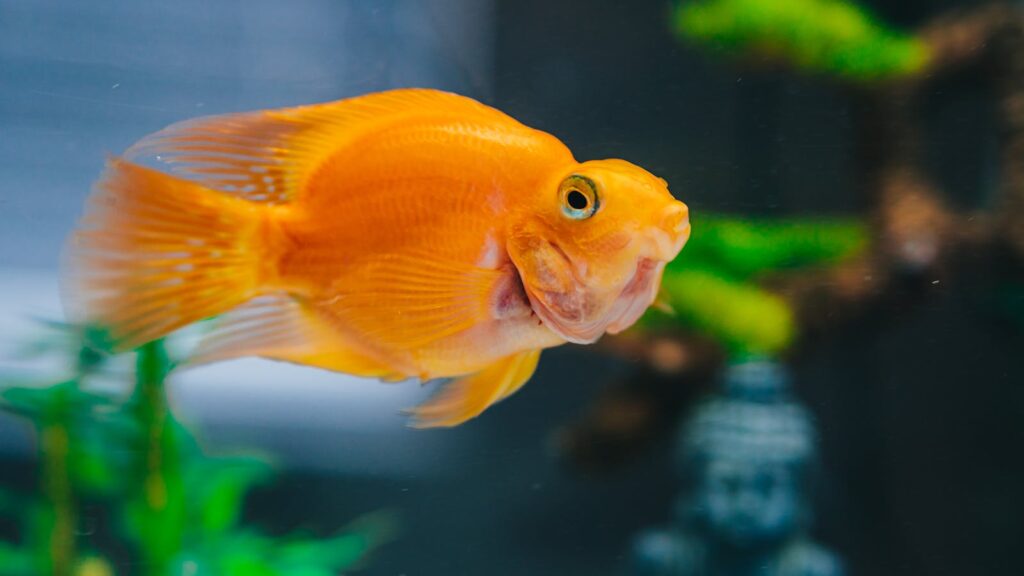
Both sharks and bony fish possess structures called gill rakers, but their development and function differ significantly between the groups. Gill rakers are projections that extend from the gill arches and serve as filtering devices to trap food particles while allowing water to pass through to the gill filaments. In many bony fish, especially filter feeders like herring or anchovies, these gill rakers are often numerous, long, and densely packed to efficiently strain tiny food particles from the water. In most sharks, gill rakers are typically less developed and fewer in number, reflecting their predominantly predatory rather than filter-feeding lifestyle. Notable exceptions exist, such as whale sharks, basking sharks, and megamouth sharks, which have evolved specialized, highly developed gill raker systems for filter feeding despite being sharks. These adaptations demonstrate how gill structures have been modified to support different feeding strategies.
Cartilaginous vs. Bony Support Structures
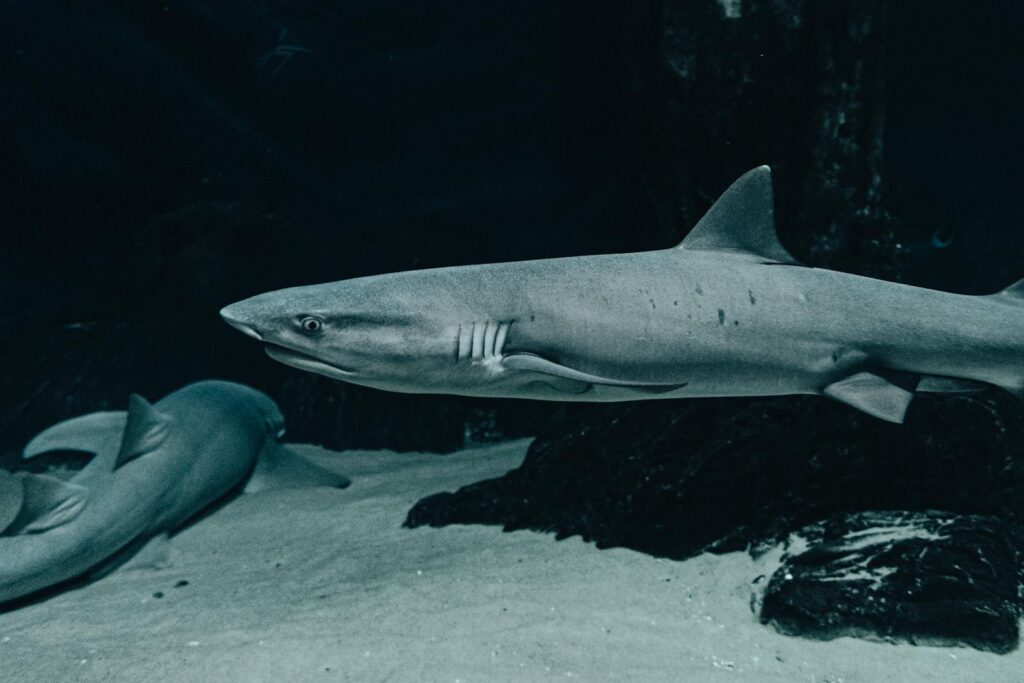
A fundamental difference between shark and bony fish gills lies in the composition of their supporting structures. As members of the class Chondrichthyes, sharks have gill arches made of cartilage rather than bone. This cartilaginous framework provides a more flexible support system for the gill filaments compared to the rigid bony gill arches found in teleost (bony) fish. The flexibility of shark gill arches offers advantages during powerful swimming movements, allowing for slight deformation without damage. Additionally, the cartilaginous nature of shark gill supports reflects their more ancient evolutionary lineage, as cartilage predates bone in vertebrate evolution. This difference in structural material affects not only the physical properties of the gill system but also its developmental patterns and maintenance requirements throughout the animal’s life.
Spiracles: A Unique Shark Adaptation

Many shark species possess specialized respiratory openings called spiracles, which are modified gill slits located just behind the eyes. Spiracles serve as an alternative water intake pathway, allowing certain sharks to draw in water for respiration even when their mouths are occupied with feeding or when resting on the ocean floor. Bottom-dwelling species like nurse sharks and wobbegongs heavily rely on spiracles to breathe while remaining stationary. This adaptation is particularly important for ambush predators that may remain motionless for extended periods while waiting for prey. Most bony fish lack this secondary respiratory opening, highlighting another key difference in gill system design. The presence and size of spiracles vary among shark species, with more active, constantly swimming species typically having reduced or closed spiracles since they rely primarily on ram ventilation.
Respiratory Efficiency and Oxygen Extraction

Differences in gill structure and water flow patterns between sharks and bony fish result in varying respiratory efficiencies. Bony fish generally achieve higher oxygen extraction efficiency through their counter-current exchange system, where blood flows through gill capillaries in the opposite direction to water flowing over the gill filaments, maximizing the oxygen concentration gradient. While sharks also utilize counter-current exchange, their overall oxygen extraction efficiency is typically lower than that of many bony fish. Scientists have measured that some bony fish can extract up to 85% of available oxygen from water passing over their gills, while sharks generally extract between 50-70%. This difference is partly compensated for in sharks by their unique blood chemistry, including specialized hemoglobin with different oxygen-binding properties. The lower efficiency also explains why many sharks must maintain continuous swimming to process sufficient water volume.
Blood Flow and Circulatory Adaptations
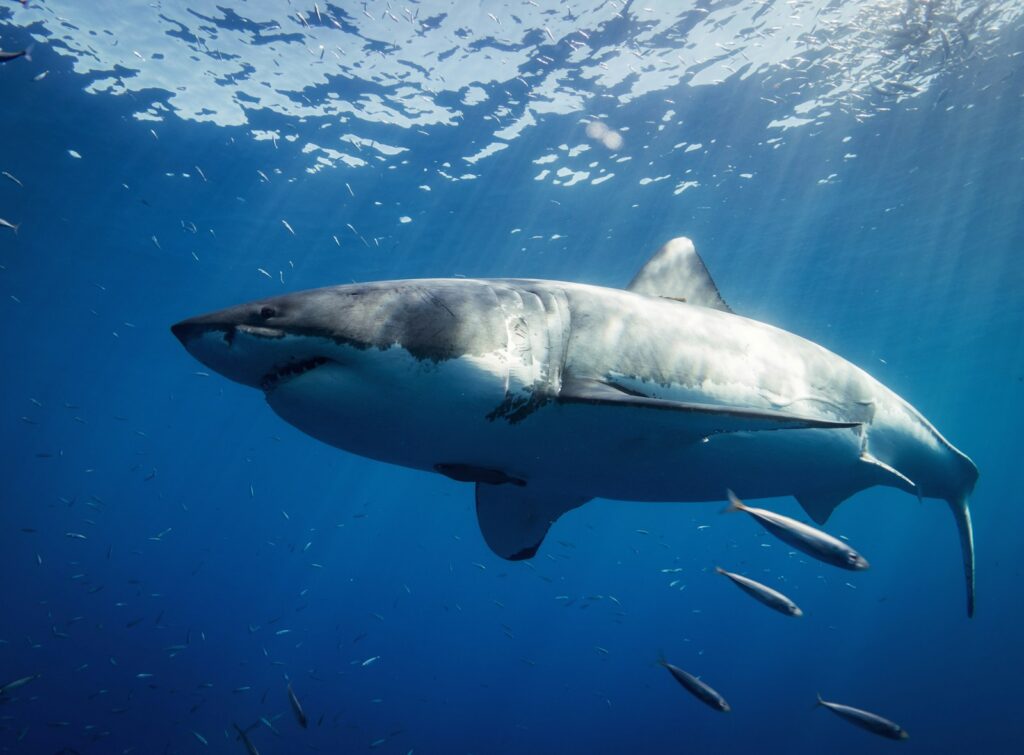
The circulatory systems connected to the gills differ significantly between sharks and bony fish, influencing respiratory function. Sharks possess a series of specialized blood vessels called arterio-arterial anastomoses that can shunt blood around certain gill areas when needed, providing greater control over blood distribution to respiratory surfaces. This adaptation helps sharks manage oxygen uptake during different activities and environmental conditions. Additionally, sharks have larger blood volumes relative to their body size compared to most bony fish, which helps compensate for their somewhat lower gill efficiency. The shark’s circulatory system is also adapted to handle greater variations in blood pressure that occur during their powerful swimming movements. These circulatory adaptations work in concert with their gill structure to support the high-energy lifestyle of these apex predators.
Salt Regulation Through Gills

Beyond oxygen uptake, gills play a crucial role in salt regulation (osmoregulation), and here too, sharks and bony fish differ markedly. Marine bony fish constantly lose water to their salty environment through osmosis and must drink seawater to compensate, then use specialized cells in their gills called chloride cells to actively excrete excess salt. Sharks, however, maintain blood salt concentrations closer to seawater levels through a unique adaptation: they retain urea and trimethylamine oxide (TMAO) in their bloodstream, which helps balance the osmotic pressure between their bodies and the surrounding seawater. This reduces water loss and the need for active salt excretion through their gills. While shark gills do contain some salt-excreting cells, they play a proportionally smaller role in osmoregulation compared to bony fish gills. This fundamental difference reflects the distinct evolutionary paths these groups have taken in adapting to marine environments.
Gill Vulnerability and Protection
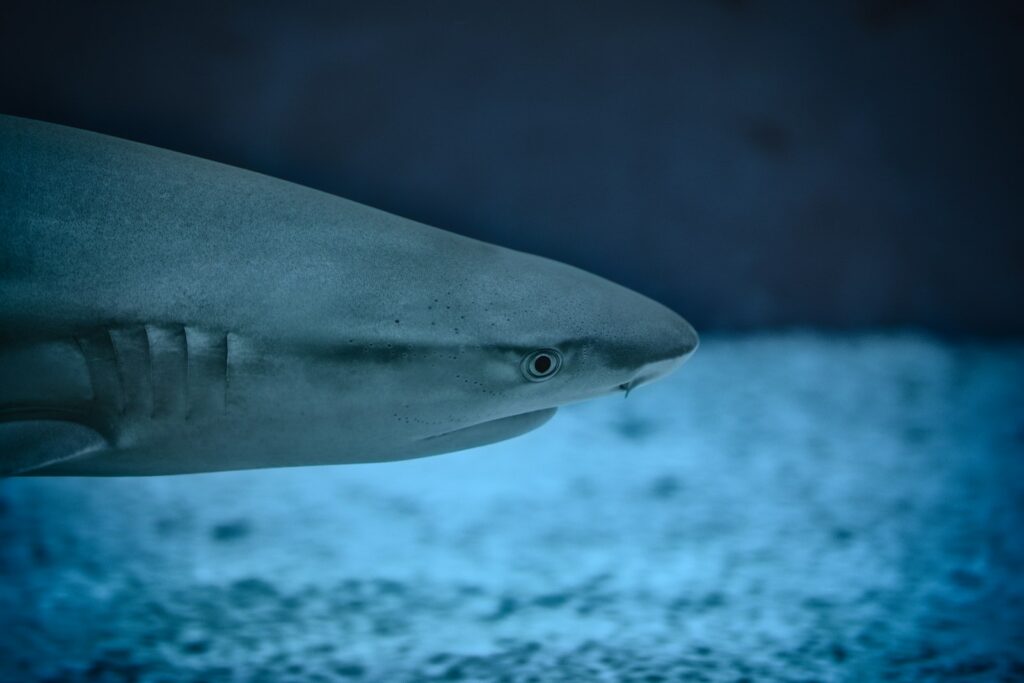
The different gill arrangements in sharks and bony fish create varying levels of vulnerability to damage and environmental threats. The exposed gill slits of sharks provide less protection against physical damage and parasites compared to the operculum-covered gills of bony fish. However, sharks have evolved thicker skin around their gill regions and possess dermal denticles (tooth-like scales) that offer some protection. Bony fish benefit from their operculum, which acts as a protective shield for the delicate gill filaments and can be clamped down tightly when threatened. The trade-off for sharks is that their more exposed gill system facilitates their ram ventilation strategy, which is essential for their active hunting lifestyle. These different protective adaptations reflect the balance each group has struck between respiratory efficiency and vulnerability in their respective ecological niches.
Evolutionary Origins of Gill Differences

The distinct gill systems of sharks and bony fish reflect their divergent evolutionary histories dating back hundreds of millions of years. Sharks belong to an ancient lineage that diverged early in vertebrate evolution, retaining more primitive gill characteristics that have nevertheless been refined through natural selection. The multiple external gill slits represent the ancestral condition, while the opercular covering in bony fish represents a later evolutionary innovation that appeared as this lineage diversified. Fossil evidence suggests that the operculum developed gradually, initially as small protective plates that eventually enlarged and fused to form the comprehensive gill cover seen in modern bony fish. This evolutionary split occurred during the Devonian period, often called the “Age of Fishes” (approximately 419-359 million years ago), when both lineages were undergoing rapid adaptive radiation. The persistence of both respiratory strategies over such vast time periods testifies to their effectiveness in their respective ecological contexts.
Adapting to Environmental Challenges

Shark and fish gill systems respond differently to environmental stressors such as low oxygen conditions (hypoxia) or water pollutants. Many bony fish can rapidly increase their gill ventilation rate through faster opercula movements when oxygen levels drop, effectively processing more water to extract the available oxygen. Sharks have more limited capacity to increase ventilation and typically respond to hypoxia by increasing swimming speed or moving to areas with higher oxygen levels. Regarding pollution tolerance, the more exposed nature of shark gills can make them more vulnerable to waterborne toxins that can damage gill tissue. Interestingly, some deep-sea sharks inhabit oxygen-minimum zones with remarkably low oxygen levels, having evolved specialized gill structures with extremely thin respiratory membranes and enhanced surface areas to maximize oxygen extraction from their challenging environment. These adaptations highlight how both gill systems continue to evolve in response to specific environmental pressures.
Implications for Conservation and Future Research

Understanding the differences between shark and fish gill systems has important implications for conservation efforts and future research directions. The reliance of many shark species on ram ventilation makes them particularly vulnerable to fishing practices such as gillnetting, where entangled sharks cannot swim forward to breathe and may suffocate. This physiological constraint has contributed to population declines in many shark species worldwide. Climate change presents additional challenges, as warming oceans contain less dissolved oxygen, potentially creating respiratory stress for both sharks and fish but affecting them differently due to their distinct gill systems. Future research focusing on the comparative physiology of these respiratory systems may yield insights for conservation strategies and could even inspire biomimetic innovations in fields such as water filtration technology or respiratory medical devices. The continued study of these remarkable adaptations offers both practical applications and deepens our appreciation for the diverse solutions evolution has produced for the fundamental challenge of underwater breathing.
Conclusion

The differences between shark and fish gills represent remarkable examples of convergent yet distinct evolutionary solutions to the challenge of underwater respiration. From their external structure and water flow mechanisms to their efficiency and protective features, these adaptations have allowed both groups to thrive in aquatic environments for hundreds of millions of years. Sharks, with their more ancient gill design featuring exposed gill slits and reliance on ram ventilation, have optimized their respiratory system for their active predatory lifestyle. Bony fish, with their more advanced opercular system and efficient buccal pumping, have developed a more versatile respiratory approach. These differences not only provide fascinating insights into evolutionary biology but also help us understand the physiological constraints and adaptations that shape the behavior, distribution, and vulnerability of these animals in our changing oceans.
- The Animal That Has the Most Efficient Energy Use in Movement - August 18, 2025
- The Mammal With the Most Unusual Fur Texture - August 18, 2025
- The Biggest Catfish Ever Caught – A True River Monster - August 17, 2025
